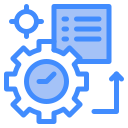Case Study: From Bottlenecks to Flow
Orders spiked after a viral campaign, but manual spreadsheets could not keep up. Late shipments climbed, staff burned out, and support queues ballooned. Leadership committed to implementing automation for business efficiency with a clear, time‑boxed roadmap.
Case Study: From Bottlenecks to Flow
We introduced event‑driven order routing, API‑based stock checks, and automated return labels with human review for edge cases. Process mapping and frontline interviews exposed weekend bottlenecks, guiding a schedule‑aware workflow that smoothed demand without adding headcount.






